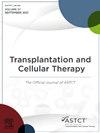肿瘤浸润性淋巴细胞药品质量属性的界定
IF 3.6
3区 医学
Q2 HEMATOLOGY
引用次数: 0
摘要
肿瘤浸润性淋巴细胞(TIL)药物产品(MPs)在治疗实体瘤,特别是转移性黑色素瘤的临床试验中显示出希望。通过这些研究,TIL开发人员从免疫学角度了解了影响临床反应的作用机制(MoA)和输注产品特性。然而,为了获得任何TIL MPs的上市许可,获得制药(工艺)开发视角也将是有益的,从中可以展示TIL MPs制造工艺的控制,并可以制定合适的控制策略。为此,必须建立一个定义良好的TIL MP。从药学角度定义和优化MPs是通过识别和改进被认为会影响安全性和有效性的产品特性或质量属性(qa)来完成的。通过了解与TIL MPs相关的qa,并在整个药物开发过程中考虑它们,可以验证改进和更改。这种药物开发方法是设计质量工作流程的一部分,本文综述了设计质量工作流程的第一步。在这里,qa是在质量目标产品概要(QTPP)中构建的,并且考虑了相应的监管期望,包括数量、身份、纯度、微生物测定和生物活性。基于监管期望和现有文献,在开发TIL MPs时提出了(关键)qa和考虑点。TIL MP的活性药物成分定义为CD45+CD3+细胞。通过分析与临床疗效相关的身份属性,描述了与TIL MPs MoA和临床疗效相关的四种广泛适用的体内功能:肿瘤识别、细胞毒能力、肿瘤归巢和持久性。这些体内功能如何在效价分析中量化,以及它们的方法/读数的局限性也进行了讨论。QTPP是为监管部门批准和增加患者可及性制定强有力的、经证实的控制战略的基础。在适用于不同环境的统一QTPP下协调TIL MP的开发也可以促进比较,从而开发更安全、更有效的TIL MP变体。本文章由计算机程序翻译,如有差异,请以英文原文为准。
Defining the Quality Attributes for Tumor-Infiltrating Lymphocyte Medicinal Products
Tumor-infiltrating lymphocyte (TIL) medicinal products (MPs) show promise for treating solid tumors, especially metastatic melanoma, in the clinical trial setting. Through these studies, TIL developers have gained an immunological perspective into the mechanism of action (MoA) and infusion product characteristics that influence clinical response. However, to reach marketing authorization for any of the TIL MPs, it will be beneficial to gain a pharmaceutical (process) development perspective as well, from which control of the TIL MPs manufacturing process can be demonstrated and a suitable control strategy can be developed. To do this, a well-defined TIL MP must be established. Defining and optimizing MPs from a pharmaceutical perspective is done by identifying and improving product characteristics or quality attributes (QAs) thought to impact safety and efficacy. Through awareness of the QAs relevant to TIL MPs and considering them throughout pharmaceutical development, improvements and changes can be validated. This approach to pharmaceutical development is part of the quality-by-design workflow, of which this review tackles the first steps. Here, the QAs are structured within a quality target product profile (QTPP), and the corresponding regulatory expectations are considered, spanning quantity, identity, purity, microbiological assays, and biological activity. Based on the regulatory expectations and available literature, the (critical) QAs and points of consideration are proposed when developing TIL MPs. The active pharmaceutical ingredient of the TIL MP is defined as the CD45+CD3+ cells. By analyzing identity attributes correlated to clinical efficacy, four broadly applicable in vivo functionalities associated with TIL MPs MoA and clinical effectiveness are described: tumor recognition, cytotoxic capacity, tumor homing, and persistence. How these in vivo functionalities are quantified in potency assays and the limitations of their methods/readouts are also discussed. The QTPP is a foundation for developing a robust, substantiated control strategy for regulatory approval and increasing patient access. Harmonizing TIL MP development under a unified QTPP applicable in different settings could also facilitate comparisons and, therefore, the development of safer and more efficacious TIL MP variations.
求助全文
通过发布文献求助,成功后即可免费获取论文全文。
去求助
来源期刊

Transplantation and Cellular Therapy
Medicine-Hematology
CiteScore
7.00
自引率
15.60%
发文量
1061
审稿时长
51 days
 求助内容:
求助内容: 应助结果提醒方式:
应助结果提醒方式:


